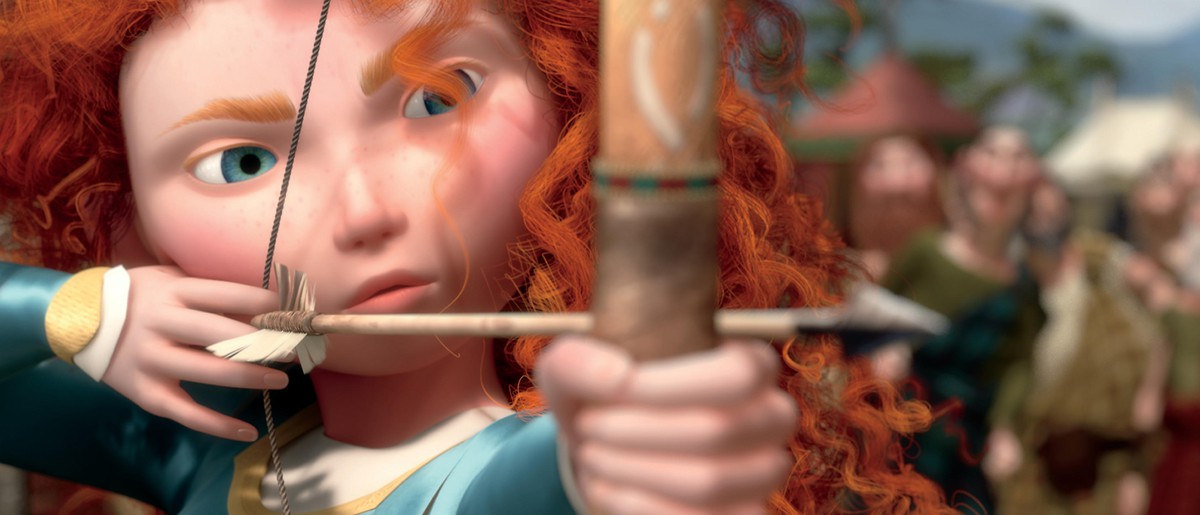Activity: give an example of each shot distance from a film you have watched and explain the effect on the viewer.
Big or Extreme Close Up (BCU/ECU)
(Allows the audience to focus on specifically, characters’ emotions relative to the circumstance. Can also be useful as dramatic reaction shots to denote to relationship dynamics.
Close Up (CU)

Much like the extreme close up, these show the audience a character’s emotions by focusing on mainly their face (usually close enough to observe the eye movement), however there is room in this shot for elements of background characters (whether portrayed with shallow or deep focus) or even body movements which can be linked to the emotion portrayed. This example is implying a strong tether between Merida and her bow and arrow as we as an audience are able to read her expressions and the other people featured are eliminated by use of focus to arguably emphasise the weapon’s importance.
Medium Close Up (MCU)

A medium close up is a tool to introduce the audience to what is going on below shoulder level or what the character is physically doing which may relate to the purpose of the scene, without totally disassociating from the identity and emotion of this person. It could be said to be the bridge between close ups for emotional and theoretical purposes and long or wide shots for literal and objective purposes.
Medium or Mid Shot (MS)

Medium Long Shot (MLS)

Long Shot(LS)

Long shots are arguably an opportunity for viewers to begin to take in and focus on setting surroundings. Inclusion of long shots is important as they ground the story and remind the audience that scenes and sequences are occurring relative to the place and time revealed.
Panoramic Shot

A panoramic shot can be an easy way to detach characters emotionally and to additionally help the audience to focus on the setting, (can be utilised as an e.g. foreshadowing technique) as well as separate characters physically from the setting itself to remind viewers that there may be other characters and places featured throughout the story, reflecting the enormity of the natural world compared to the subject.
(WRITTEN ELEMENTS NOT FROM SOURCES…. FROM ME?)
